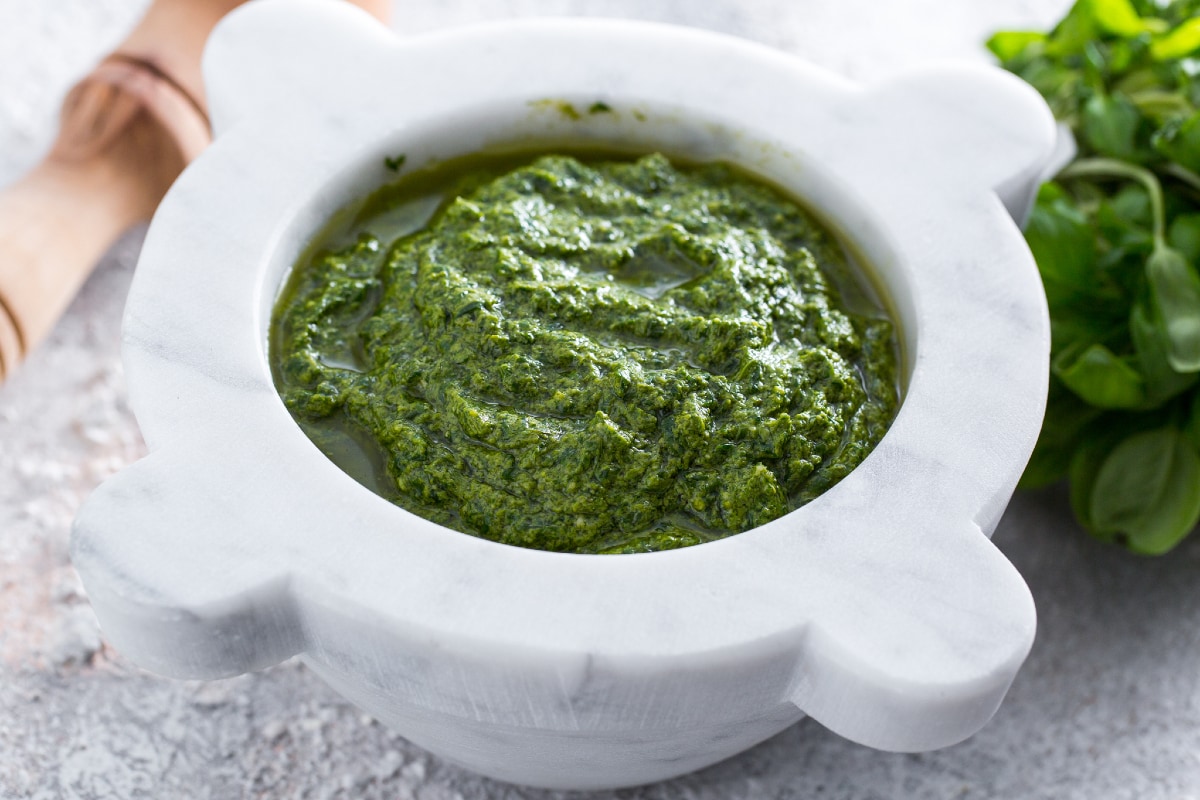Purslane pesto
- Easy
- 30 min


Rich, vibrant basil flavor makes authentic pesto Genovese hard to resist at any family table—fresh green color and bold aroma always bring an inviting, Italian-inspired vibe that everyone enjoys. Made for classic food lovers, this family-favorite easy pesto recipe delivers great depth and that distinct, garlicky kick from fresh basil blended with tangy cheese and smooth olive oil. You’ll notice how bright it looks in a bowl—simple, almost rustic—with a slightly thick texture that gives every plate of pasta, drizzle on grilled veggies, or swipe across a crusty sandwich a real taste upgrade. Any weeknight can feel a bit more special, just with that strong basil scent floating through the room and those little bits of cheese shining in the mix. Friends who stop by for dinner almost always comment on the smell (in a GOOD way)—it just feels homey and real, yet sort of fancy without trying too hard. Side by side with pasta, between bread, or just with simple crackers, this pesto Genovese stands out for amazing versatility that real home cooks appreciate.
Busy families usually like this make-ahead pesto for all the obvious reasons—the reliable flavor sticks around, the color stays beautiful, and it saves so much time deciding what’s for dinner. Using a pine nut substitute (walnuts work really well) keeps things affordable without changing those delicious, classic flavors—definitely a nice tip for budget cooks. Whether you picked up fresh basil at the market or needed to use what’s left in the fridge, these budget-friendly basics kind of guarantee this becomes a regular go-to in the weeknight dinner plan. Serve it cold or at room temp, spread on garlic bread (DELICIOUS combo), toss with gnocchi, swirl into soup, or spoon next to baked chicken for easy wins every time—kids and grownups both keep coming back for seconds. Home cooks almost always say it’s the simple, traditional Italian touch that never lets them down for family meals, gatherings, even last-minute guests. Extra batch? Freeze for easy dinners later. This pesto Genovese makes your kitchen smell amazing, keeps everyone happy, and gives dinner a cheerful, flavor-packed upgrade.
You might also like:

To make Genoese pesto, first remove the basil leaves from the stems and place them in a colander 1. Rinse quickly under cold running water 2, then transfer them to a dish towel and dry them by blotting and rubbing gently 3. Pay attention to the leaves’ concave shape as water can pool in them; the leaves must be nice and dry.

Remove the germ from the garlic cloves and cut them in half 4, then place in a marble mortar. Work the garlic with a wooden pestle until you get a cream 5. At this point, add the pine nuts 6 and continue to grind.

Once a paste has formed 7, add the basil leaves 8 and coarse salt 9.

Always start with pounding movements, then moving on to circular movements 10. Make sure you scrape around the inside of the mortar with a spoon to unstick the ingredients; that way, you’ll get an even pesto. Once the consistency is creamy and even, add the pecorino 11, in chunks, and grind in the same way to incorporate it, then add the Parmigiano Reggiano 12, doing the same.

When all the ingredients have been reduced to a cream, pour in the oil 13 and circle the pestle around for a couple of more minutes 14. Your genoese pesto is ready to be used 15!